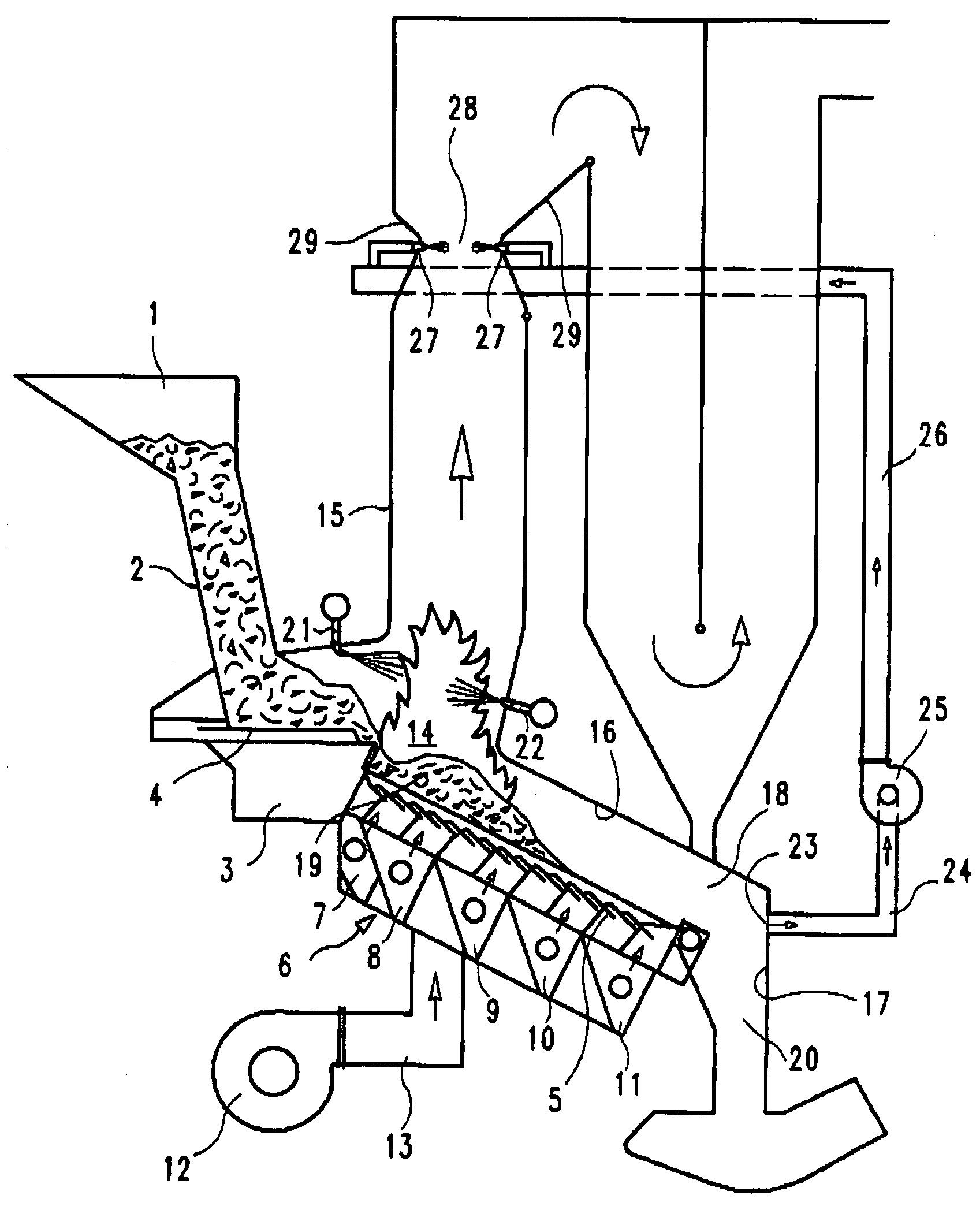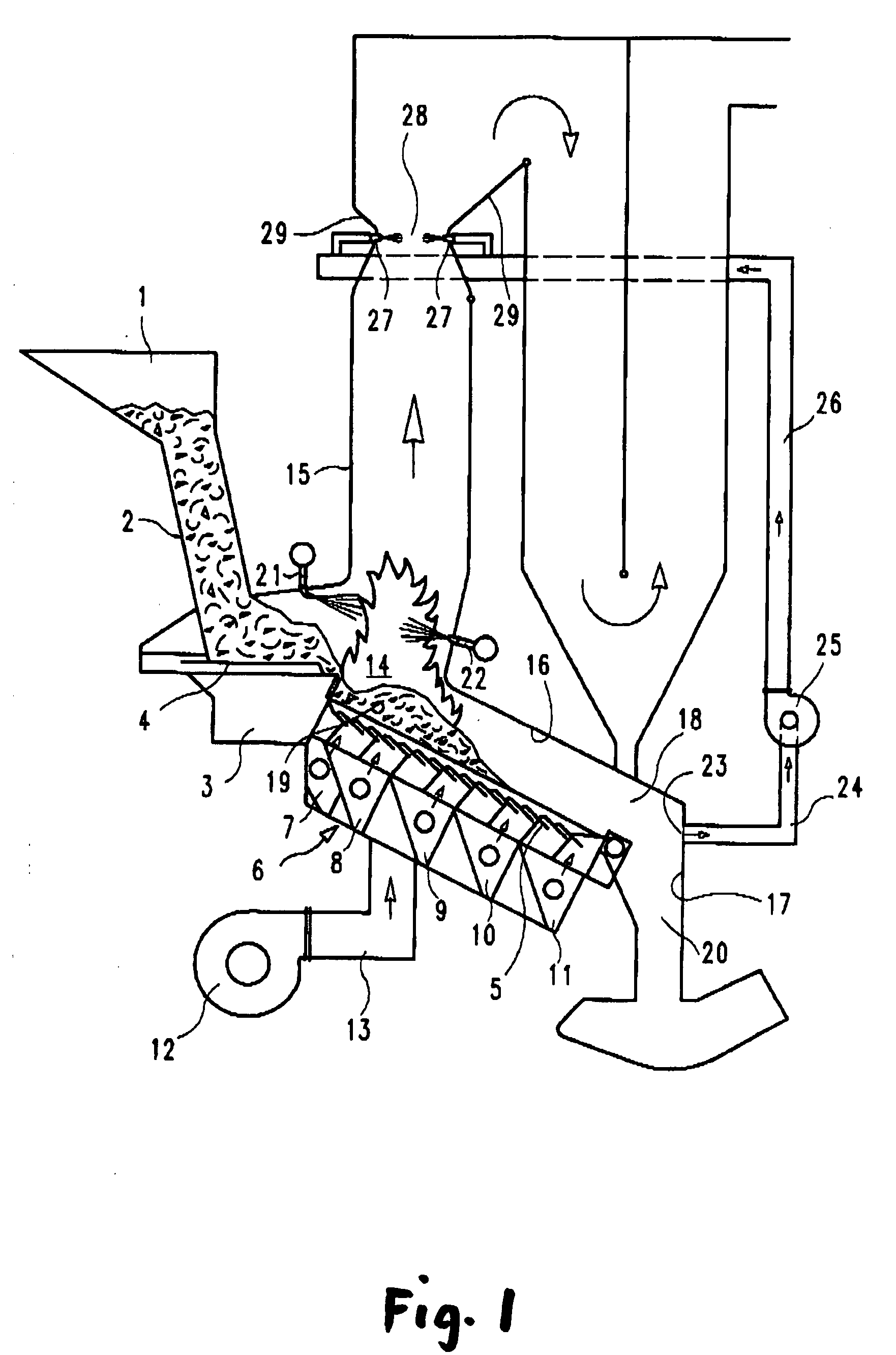Method for supplying combustion gas in incineration systems
a technology of incineration system and combustion gas, which is applied in the direction of solid fuel combustion, combustion types, lighting and heating apparatus, etc., can solve the problems of early destruction, inability to completely burn out solid fuel, and no longer available to react with already formed nitrogen oxides
- Summary
- Abstract
- Description
- Claims
- Application Information
AI Technical Summary
Benefits of technology
Problems solved by technology
Method used
Image
Examples
Embodiment Construction
[0012]As opposed to the conventional operating mode of combustion systems, the supply of primary combustion gas remains unchanged at an approximately stoichiometric flow in order to optimize burnout of the solid fuel. To still maintain a low excess air level for the entire combustion process and to allow the necessary amount of secondary combustion gas flow for mixing / homogenizing the combustion gas, the sum of the primary gas flow and secondary gas flow is reduced until essentially stoichiometric or virtually stoichiometric reaction conditions are achieved. In practice, this means that the gases formed during primary combustion that still contain significant amounts of unreacted oxygen are prevented from entering the secondary combustion zone. The gases in question are those that arise in the rear combustion grate area. There, primary combustion gas is mainly supplied to ensure complete burnout of the solid fuel and to cool the combustion residues (bottom ash). The resulting flue g...
PUM
 Login to View More
Login to View More Abstract
Description
Claims
Application Information
 Login to View More
Login to View More - R&D
- Intellectual Property
- Life Sciences
- Materials
- Tech Scout
- Unparalleled Data Quality
- Higher Quality Content
- 60% Fewer Hallucinations
Browse by: Latest US Patents, China's latest patents, Technical Efficacy Thesaurus, Application Domain, Technology Topic, Popular Technical Reports.
© 2025 PatSnap. All rights reserved.Legal|Privacy policy|Modern Slavery Act Transparency Statement|Sitemap|About US| Contact US: help@patsnap.com


